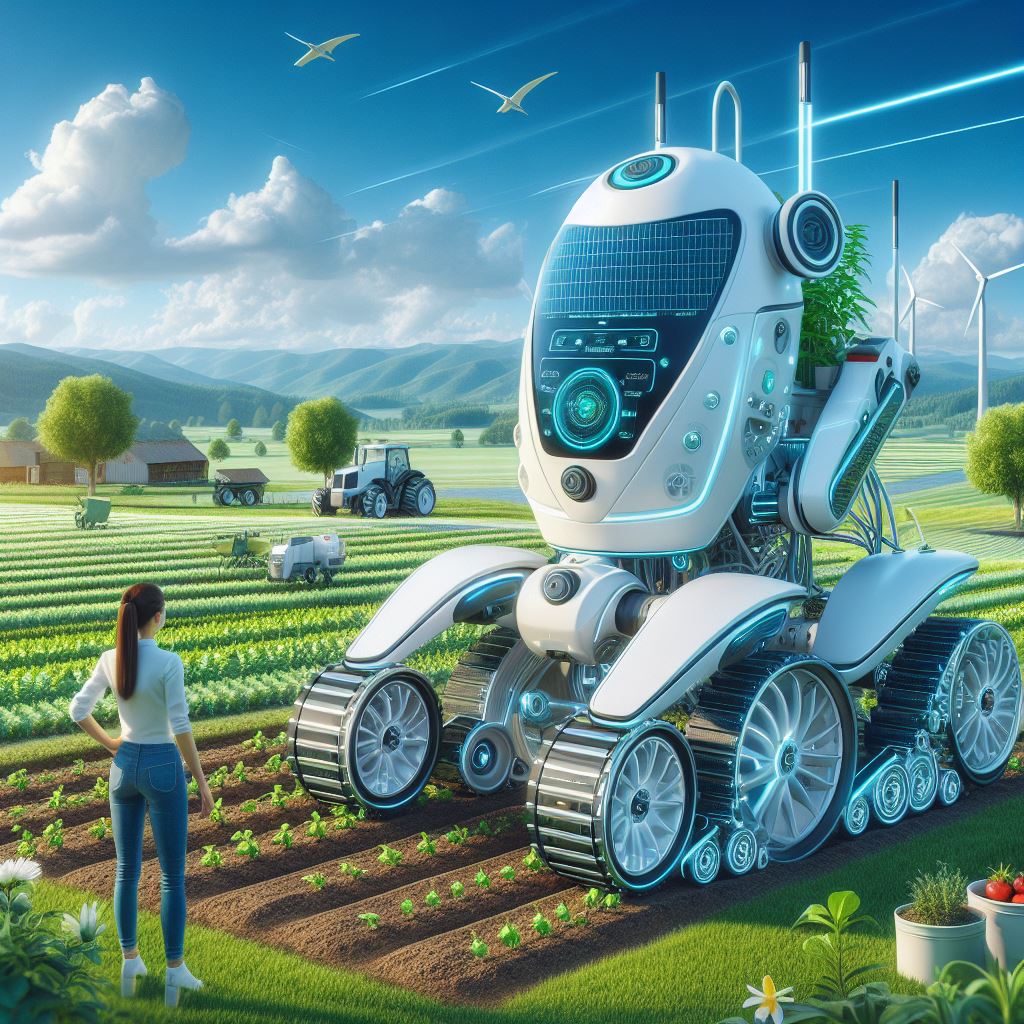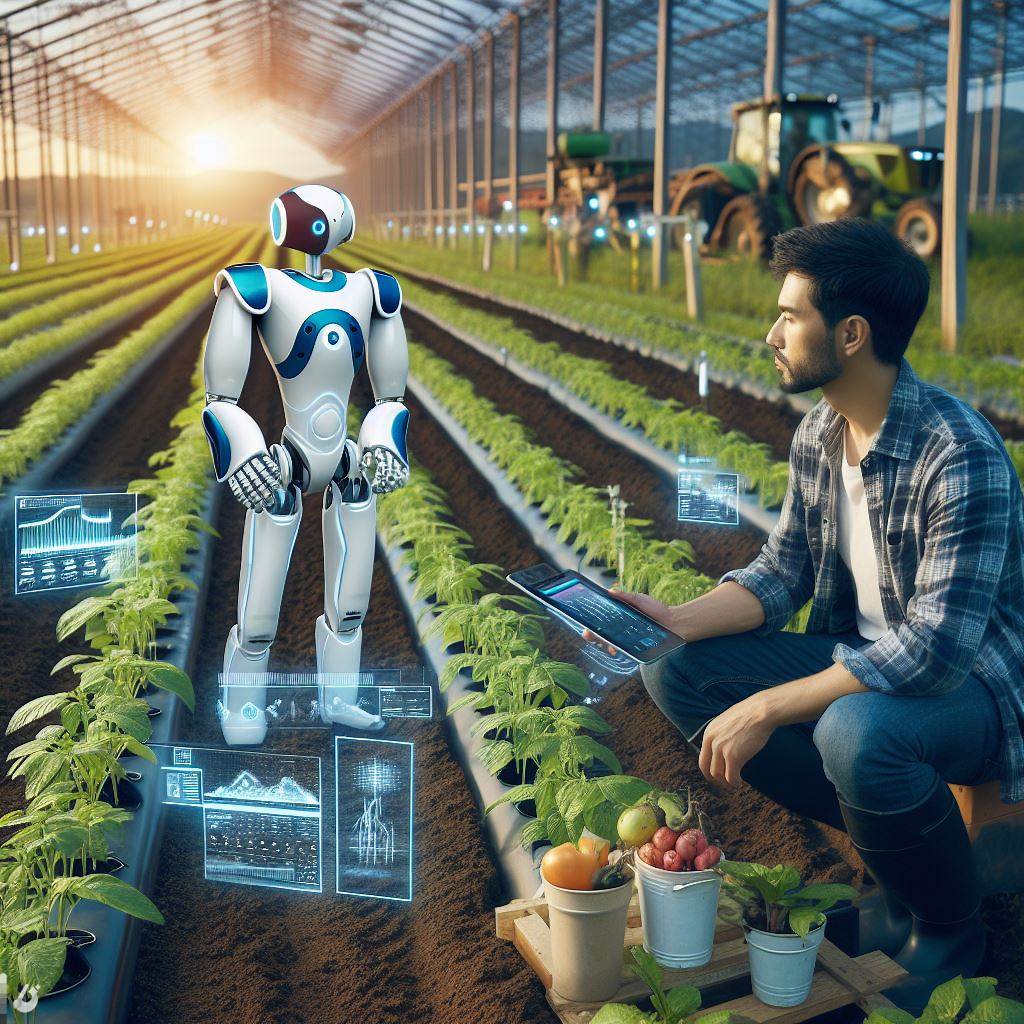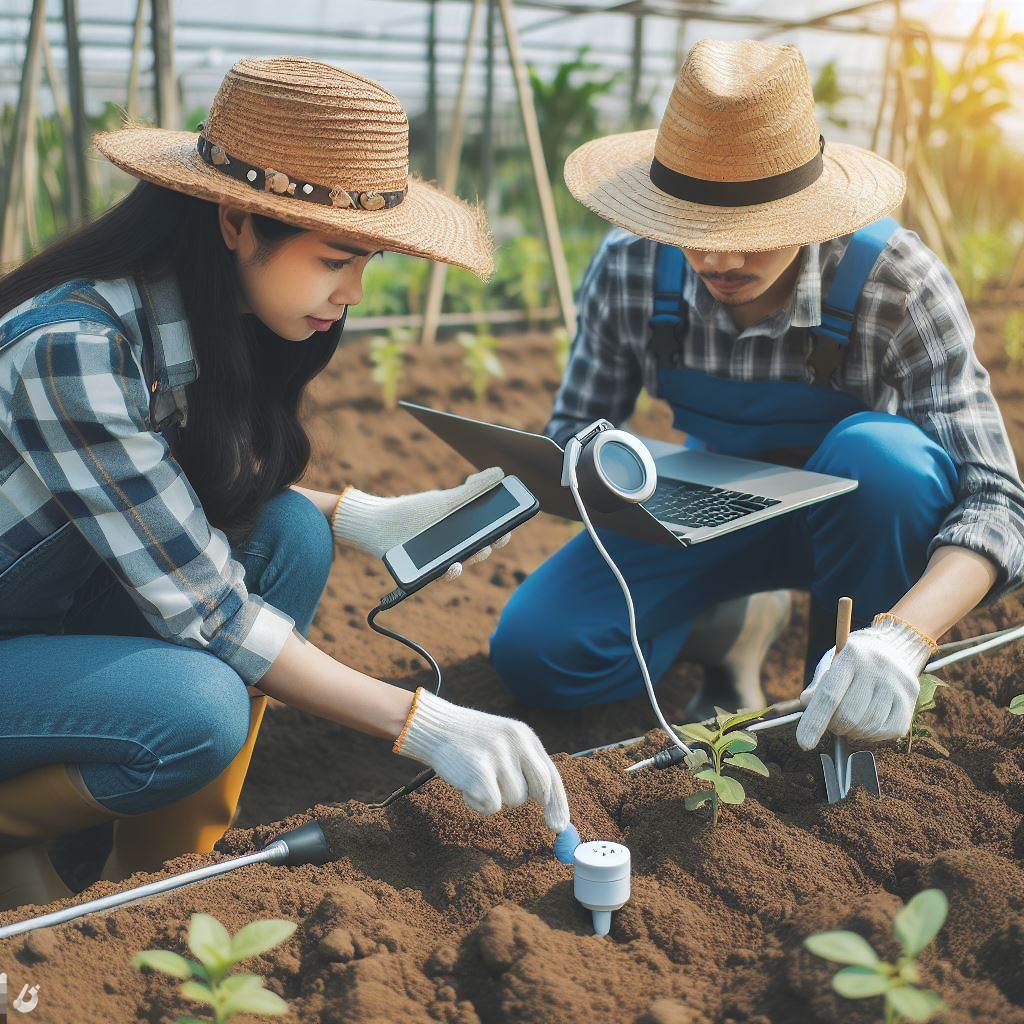Introduction
Overview of the Topic
- Robotic hands revolutionize harvesting, blending technology with agriculture for unprecedented efficiency.
- These mechanical marvels promise to redefine the future of crop harvesting worldwide.
Importance of Harvesting in Agriculture
- Harvesting is the backbone of agriculture, marking the culmination of meticulous farming efforts.
- Efficient harvesting ensures food security, economic stability, and supports global sustainability goals.
- Manual harvesting poses challenges such as labor shortages and time constraints, demanding innovative solutions.
- Robotic hands address these challenges by offering precision, speed, and the ability to operate tirelessly.
- As we delve into the future, the integration of robotic hands in fields promises a transformative paradigm shift.
Current challenges in harvesting
Labor shortage
One of the major concerns in the agricultural industry is the shortage of skilled labor. Farmers are struggling to find workers to harvest their crops.
This labor shortage is primarily due to the unattractive nature of manual labor in the fields.
Many young people are opting for other professions that offer better pay and working conditions.
Moreover, the decreasing population in rural areas further exacerbates this issue, as there are fewer individuals available to work on farms.
To address this problem, farmers are turning to technology, specifically robotic hands, to automate the harvesting process.
Inefficiency and low productivity
Manual harvesting methods have inherent limitations in terms of efficiency and productivity.
Human workers can only harvest a certain amount of crops within a specific timeframe, which hampers the overall productivity of the farm.
In addition, manual labor is prone to errors, such as improper handling of delicate crops or missing ripe produce during the harvesting process.
Robotic hands, on the other hand, can significantly improve productivity by working faster and more accurately.
High costs associated with manual labor
The costs associated with manual labor in harvesting are substantial and continue to rise.
Farmers must not only pay wages to the workers but also provide them with proper accommodations and ensure their safety and well-being.
Moreover, there are additional expenses related to recruitment, training, and insurance.
By incorporating robotic hands into the harvesting process, farmers can reduce labor costs and allocate resources more efficiently.
Although the initial investment in robotic technology may be high, the long-term savings and benefits outweigh the costs.
The current challenges in harvesting, including labor shortages, inefficiency, and high costs, have pushed the agricultural industry to seek alternative solutions.
Transform Your Agribusiness
Unlock your farm's potential with expert advice tailored to your needs. Get actionable steps that drive real results.
Get StartedRobotic hands offer a promising future for harvesting by addressing these challenges.
With their ability to automate tasks, increase productivity, and reduce costs, robotic hands can revolutionize the way crops are harvested.
As technology continues to advance, it is crucial for farmers to embrace these innovations to ensure a sustainable and efficient future for the agricultural sector.
Read: 5 Essential Tips for Healthy Cattle Rearing
Robotic hands in the agricultural field
Definition and explanation of robotic hands
Robotic hands are mechanical devices designed to mimic the movements and capabilities of the human hand.
They are equipped with sensors and actuators that enable them to grasp and manipulate objects.
Advantages of using robotic hands for harvesting
- Increased efficiency and productivity: Robotic hands can work continuously without breaks, leading to faster harvest cycles and increased overall productivity.
- Cost-effectiveness: By eliminating the need for manual labor, farmers can save on costs associated with hiring and accommodating workers.
- Reduction in labor requirements: Using robotic hands reduces the dependency on human labor, alleviating the challenges of finding and managing agricultural workers.
- Improved quality of harvest: Robotic hands are designed to handle delicate fruits and vegetables with precision, leading to less damage and higher-quality produce.
Examples of ongoing research and development in robotic hands
Currently, there are several exciting projects and advancements in the field of robotic hands specifically targeted towards harvesting in agriculture.
One notable example is the development of fruit-picking robots that can assess ripeness, grasp the fruit gently, and harvest it without causing any damage.
Another area of research involves the use of machine learning algorithms to enable robotic hands to adapt and learn from different harvesting scenarios.
Researchers are also exploring the integration of robotic hands with other technologies such as drones and autonomous vehicles to create a comprehensive agricultural system.
In addition, advancements in sensor technology are enabling robotic hands to have a better understanding of the size, shape, and texture of the crops they handle, improving their efficiency and effectiveness.
Overall, these ongoing research and development efforts hold great promise for revolutionizing the agricultural industry and transforming the future of harvesting.
Read: Climate-Smart Agri: Tech Against Climate Change
How robotic hands work in the field
Sensors and AI capabilities
Robotic hands used in harvesting fields are equipped with advanced sensors and AI capabilities.
These sensors allow the robotic hands to detect and identify ripe fruits and vegetables accurately.
The AI capabilities enable the robotic hands to make real-time decisions based on the data collected by the sensors.
This combination of sensors and AI helps the robotic hands to perform precise and efficient harvesting tasks.
By using sensors and AI, robotic hands can distinguish between different types of crops and adjust their grip accordingly.
Mechanical design and functionalities
The mechanical design of robotic hands is crucial for their successful operation in the field.
Robotic hands are equipped with multiple fingers and joints that mimic the movement of a human hand.
These fingers and joints allow the robotic hands to grip and grasp fruits and vegetables with precision.
The mechanical functionalities of robotic hands also include the ability to apply appropriate pressure while handling fragile crops.
Some robotic hands are even designed to mimic the shape and size of a specific human hand for better compatibility with existing tools and equipment.
Integration with other agricultural technologies
Robotic hands are designed to seamlessly integrate with other agricultural technologies used in the field.
Showcase Your Farming Business
Publish your professional farming services profile on our blog for a one-time fee of $200 and reach a dedicated audience of farmers and agribusiness owners.
Publish Your ProfileThey can be connected to farming drones and autonomous vehicles to optimize the entire farming process.
When connected to drones, robotic hands can receive real-time information about the location and ripeness of crops.
This information allows them to intelligently plan their harvesting routes and prioritize the most ripe fruits and vegetables.
Integration with autonomous vehicles enables robotic hands to transfer harvested crops directly for processing or distribution.
This integration ensures a streamlined workflow and minimizes the time and cost associated with manual labor.
Basically, the success of robotic hands in the field relies on their advanced sensors, AI capabilities, and mechanical design.
These technologies enable robotic hands to perform precise and efficient harvesting tasks.
Furthermore, their integration with other agricultural technologies optimizes the entire farming process.
As the future of harvesting, robotic hands offer a promising solution to increase productivity and reduce labor demands in the agriculture industry.
Read: Livestock Tech: Innovations in Animal Farming
Benefits of adopting robotic hands in harvesting
Economic benefits for farmers
- Robotic hands can significantly reduce labor costs, leading to higher profitability for farmers.
- With the use of robotic hands, farmers can achieve increased yields, resulting in greater profits.
- The integration of robotic hands in harvesting promotes improved farm sustainability through efficient resource utilization.
Social and environmental benefits
- Adopting robotic hands in harvesting provides better working conditions for farmers by reducing their physical strain.
- The use of robotic hands helps minimize the usage of chemical substances, promoting safer and healthier environments for both farmers and consumers.
- Furthermore, robotic hands aid in the preservation of soil health by preventing excessive soil compaction and erosion.
Robotic hands have emerged as a groundbreaking technology revolutionizing the agricultural sector.
By adopting this advanced harvesting method, farmers can enjoy a multitude of benefits on various fronts.
Economic benefits for farmers
- Reduction in labor costs: Implementing robotic hands in harvesting eliminates the need for a large manual labor force. As a result, farmers can significantly reduce their labor expenses. This cost reduction directly contributes to increased profitability and sustainability for farmers, allowing them to allocate their saved resources to other essential aspects of their farming operations.
- Increased yield and profits: Robotic hands have the potential to revolutionize the efficiency of harvesting processes. The use of precise robotic tools enables farmers to optimize crop harvesting, ensuring maximum yield extraction. The higher yields directly translate into increased profits and financial well-being for farmers.
- Improved farm sustainability: By integrating robotic hands in harvesting, farmers can enhance the sustainability of their farming practices. Robotic hands allow for precise and controlled harvesting, reducing wastage and promoting resource conservation. Efficient resource utilization minimizes environmental impact and supports sustainable farming methods.
Social and environmental benefits
- Better working conditions for farmers: Traditional manual harvesting is labor-intensive and physically demanding. Adopting robotic hands relieves farmers from the backbreaking labor, reducing the risk of injuries and health issues. Improved working conditions contribute to the overall well-being and quality of life for farmers, ensuring their long-term commitment to farming.
- Minimization of chemical usage: One significant advantage of robotic hands in harvesting is their ability to target specific plants or crops. This precision eliminates the need for extensive chemical usage, reducing the risk of harmful chemical exposure for both farmers and consumers. The minimized chemical usage also helps in maintaining ecological balance, supporting biodiversity in the surrounding ecosystem.
- Preservation of soil health: Traditional harvesting methods often result in soil compaction and erosion due to heavy machinery usage. Conversely, robotic hands are lighter and exert minimal pressure on the soil surface. This gentle approach reduces the risk of soil compaction, allowing the soil to maintain its natural structure. Preserving soil health is crucial for long-term sustainable farming practices.
In general, the adoption of robotic hands in harvesting brings numerous benefits to farmers.
From economic advantages like reducing labor costs and increasing profits to social and environmental benefits such as improved working conditions, lower chemical usage, and enhanced soil health, the integration of this advanced technology paves the way for a more sustainable and efficient agricultural future.
Embracing robotic hands in harvesting not only ensures economic prosperity for farmers but also promotes environmental stewardship and enhances the overall well-being of agricultural communities.

Challenges and Limitations of Using Robotic Hands
Initial Investment Costs
Implementing robotic hands in the field for harvesting presents several challenges and limitations. One of the primary concerns is the high initial investment costs.
- Expensive Technology: Robotic hands are considered advanced technology, which comes with a hefty price tag for installation and setup.
- Limited Budget Allocation: Small-scale farmers might find it difficult to allocate a significant portion of their budget to invest in robotic hands.
- Return on Investment: It may take a considerable amount of time for farmers to see a return on their investment due to the high initial costs.
Compatibility with Different Crops and Fields
Another challenge of using robotic hands in the field is ensuring compatibility with different types of crops and fields.
- Crop-specific Design: Robotic hands need to be carefully designed and calibrated to handle various crops, such as fruits, vegetables, or grains.
- Field Adaptability: Different fields have unique layouts and soil conditions, which may pose difficulties for robotic hands to navigate and operate efficiently.
- Harvesting Techniques: Crops require different harvesting techniques, and robotic hands need to be programmed accordingly for each specific crop.
Technical Issues and Maintenance Requirements
Technical issues and maintenance requirements are significant limitations that come with using robotic hands in agriculture.
- Sensor and Vision Systems: Robotic hands heavily rely on sensor and vision systems for precision and accuracy. These systems may require frequent calibration and maintenance.
- Weather Conditions: Harsh weather conditions, such as rain, extreme temperatures, or strong winds, can negatively impact the performance and functionality of robotic hands.
- Power Source and Battery Life: Robotic hands need a reliable power source and sufficient battery life to operate continuously, which may pose challenges in remote or off-grid areas.
- Skilled Maintenance Personnel: Regular maintenance and repairs require skilled personnel who are knowledgeable about the specific robotic hand technology being used.
- Downtime and Production Halts: If technical issues arise, it may lead to downtime and halt production, impacting the overall efficiency and profitability of the farming operation.
Overall, while robotic hands offer potential benefits for harvesting in fields, there are several challenges and limitations that need to be addressed.
The high initial investment costs, compatibility with different crops and fields, and technical issues and maintenance requirements pose significant obstacles.
However, with advancements in technology and further research, these challenges can potentially be overcome, leading to a more automated and efficient future for harvesting in the agricultural industry.
Read: Soil Sensors: Enhancing Crop Yield Insights
The Future Prospects of Robotic Hands in Harvesting
Advancements in Technology
With rapid advancements in technology, the future prospects of robotic hands in harvesting look promising.
New developments in robotics, artificial intelligence, and machine learning are revolutionizing the agricultural industry.
Robotic hands equipped with sensors and cameras can identify ripe produce, ensuring efficient and accurate harvesting.
The integration of advanced algorithms allows the robotic hands to make precise and delicate movements, minimizing damage to crops.
The use of haptic feedback technology enables robotic hands to mimic the human sense of touch, providing a gentle grip on delicate fruits.
Potential Impact on the Agricultural Industry
The introduction of robotic hands in harvesting has the potential to revolutionize the agricultural industry.
Robotic harvesting can significantly reduce labor costs by replacing manual labor with automated systems.
This technology can address labor shortages and reduce dependency on migrant workers, ensuring a reliable workforce for farmers.
Robotic hands can operate 24/7 without fatigue, increasing productivity and allowing for harvesting operations to be completed faster.
The precision and accuracy of robotic hands can lead to increased crop yields and enhanced quality control.
By minimizing crop damage, robotic hands can reduce post-harvest losses, resulting in economic benefits for farmers.
Furthermore, the implementation of robotic hands can promote sustainable farming practices by reducing the need for pesticides and herbicides.
Integration with Other Smart Farming Practices
Robotic hands have the potential to integrate with other smart farming practices, creating a comprehensive and efficient system.
Through the use of sensors and data analysis, robotic hands can work in synergy with drones, autonomous vehicles, and smart irrigation systems.
Real-time data collected by these systems can be utilized to optimize harvesting schedules, minimize waste, and increase overall productivity.
Additionally, robotic hands can work in collaboration with agricultural robots, such as weed-pulling robots, to maximize efficiency in farming operations.
The integration of these technologies can lead to a more sustainable and profitable agricultural industry, meeting the demands of a growing global population.
In general, the future prospects of robotic hands in harvesting are promising, thanks to advancements in technology.
Showcase Your Farming Business
Publish your professional farming services profile on our blog for a one-time fee of $200 and reach a dedicated audience of farmers and agribusiness owners.
Publish Your ProfileThe potential impact on the agricultural industry is significant, with reduced labor costs, increased productivity, and improved crop quality.
Integration with other smart farming practices further enhances the efficiency and sustainability of farming operations.
As the development and adoption of robotic hands progress, we can expect a revolutionized approach to harvesting, ensuring a secure and prosperous future for farmers.
Read: CRISPR in Agriculture: Editing Crop Genes
Conclusion
In closing, we have discussed the potential of robotic hands in revolutionizing harvesting.
It is evident that these robotic hands have the ability to increase efficiency and productivity in the field.
Farmers should embrace this technology and explore the possibilities it offers to transform their operations.
With the advancements in robotics, the future of harvesting looks promising.
Robotic hands can provide precise and delicate handling, reducing damage to crops and improving overall quality.
Additionally, these machines can work tirelessly, ensuring timely harvesting and minimizing labor costs.
The potential of robotic hands in the field is immense, with the capability to address labor shortages and increase output.
By adopting this technology, farmers can stay competitive in the ever-evolving agricultural industry.
It is crucial for farmers to keep an open mind and embrace innovation to optimize their harvest processes.
In a nutshell, the future of harvesting lies in the adoption of robotic hands, ushering in a new era of efficiency and productivity for farmers worldwide.




